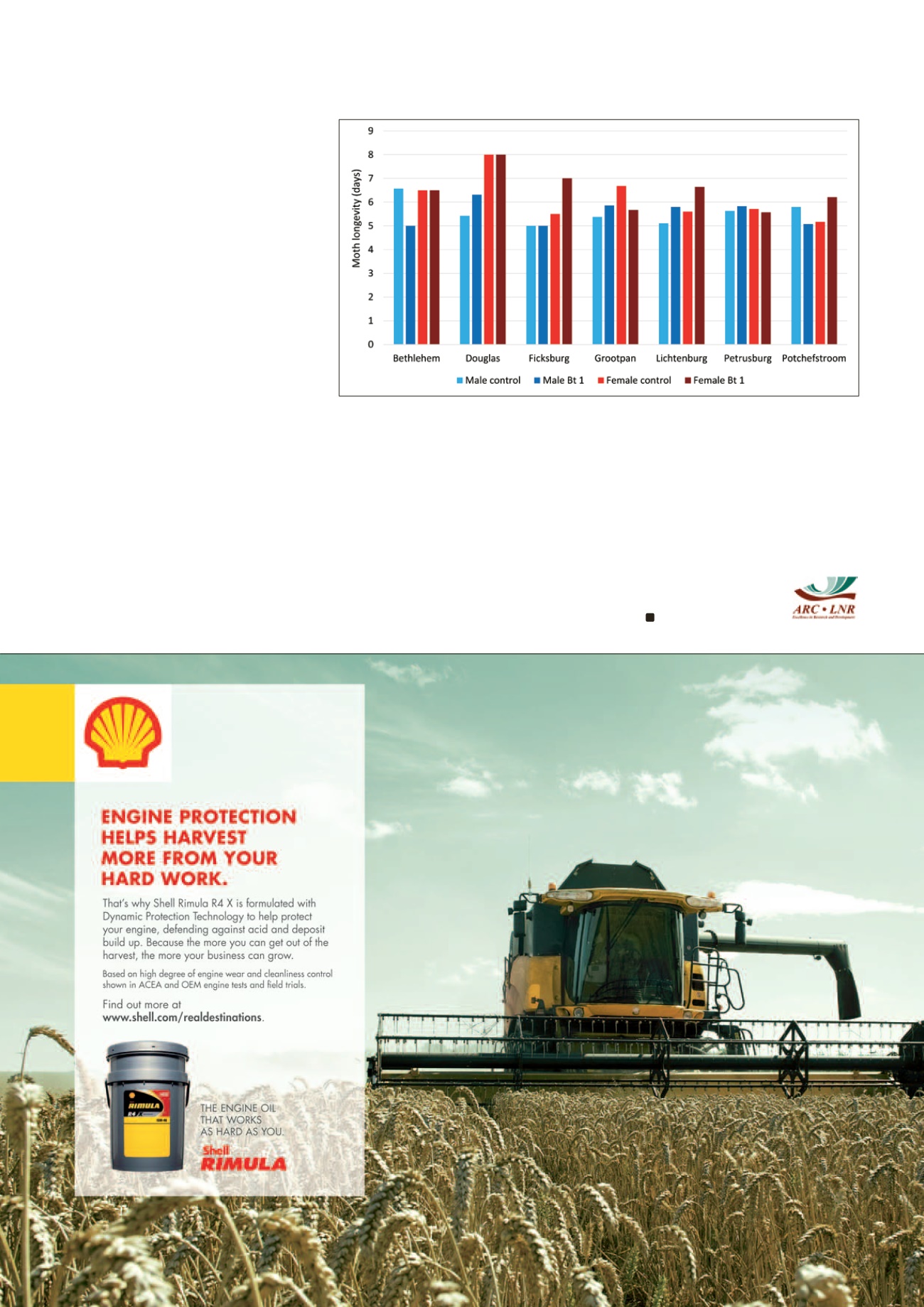

Graph 3: Longevity of
Busseola fusca
moths after feeding on non-Bt and Bt maize.
The mass of both male and female pupae
were determined separately. Statistically
there was no significant difference be-
tween pupal weight on the non-Bt and Bt 1
treatment for both male and female pupae
(
Graph 2
), indicating that the larvae that
had fed on the Bt 1 treatment was just as fit
as larvae feeding on the non-Bt treatment.
From this data it was also apparent that the
female pupae tend to be heavier than the
males.
Moth longevity was determined from popu-
lations that had sufficient numbers of moths
that emerged from pupae. There was no
significant difference in moth longevity
between the non-Bt and Bt 1 treatments of
any of the populations. Male moth longev-
ity on both treatments ranged between five
and seven days and female moth longevity
between six and eight days, respectively
(
Graph 3
).
It is important to monitor these life history
parameters of pupae and moths – not only
that of the larval stage as described above,
because of concerns about evolution of re-
sistance due to the extensive cultivation of
Bt maize.
Monitoring the fitness of all the life stages
of the African stemborer to survive and
reproduce provides valuable information
that can be used in the management of insect
resistance evolution. Since the African maize
stemborer is already known to be resistant
to Bt maize that express Cry1Ab proteins, it
is therefore important to know if there is any
fitness cost present in resistant populations.
Fitness costs could possibly play a role in
resistance management strategies as it
may select against resistance. This study
not only provides baseline information
of the African stemborer susceptibility to
Bt maize in South Africa, but also other Af-
rican countries. Information compiled about
pupa and moth life parameters adds value
to determine if the insect resistant manage-
ment strategy that is used still has the pow-
er to delay resistance development.
For more information con-
tact Dr Annemie Erasmus or
Elrine Strydom at 018 299
6100.
















